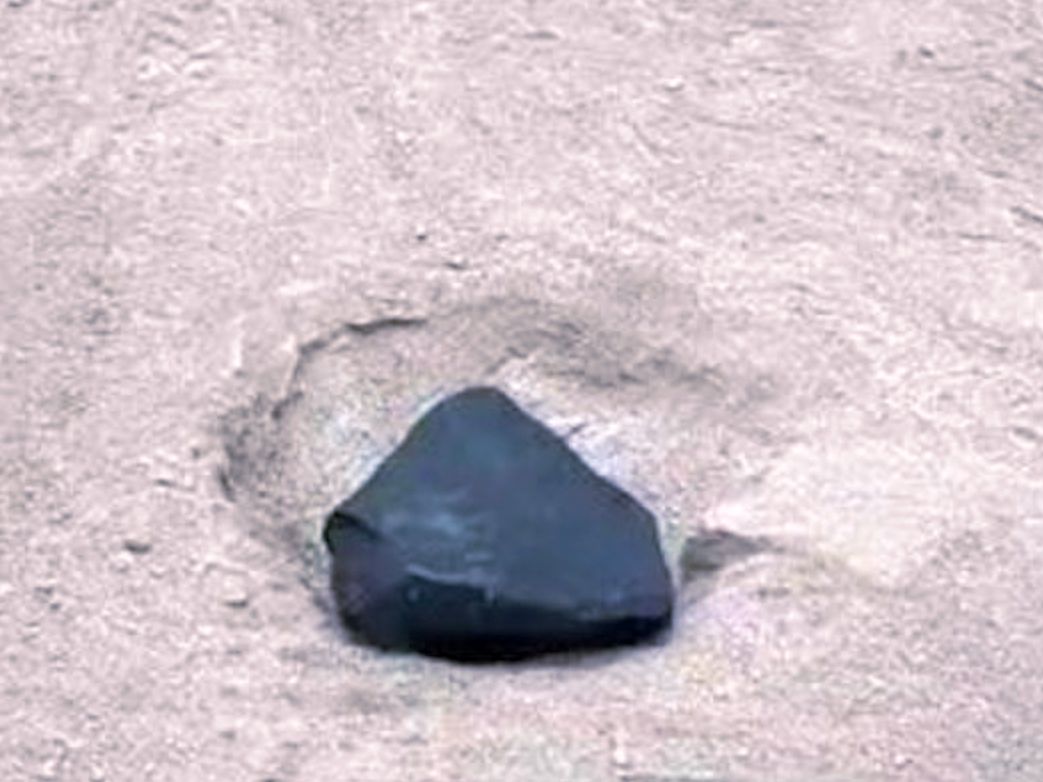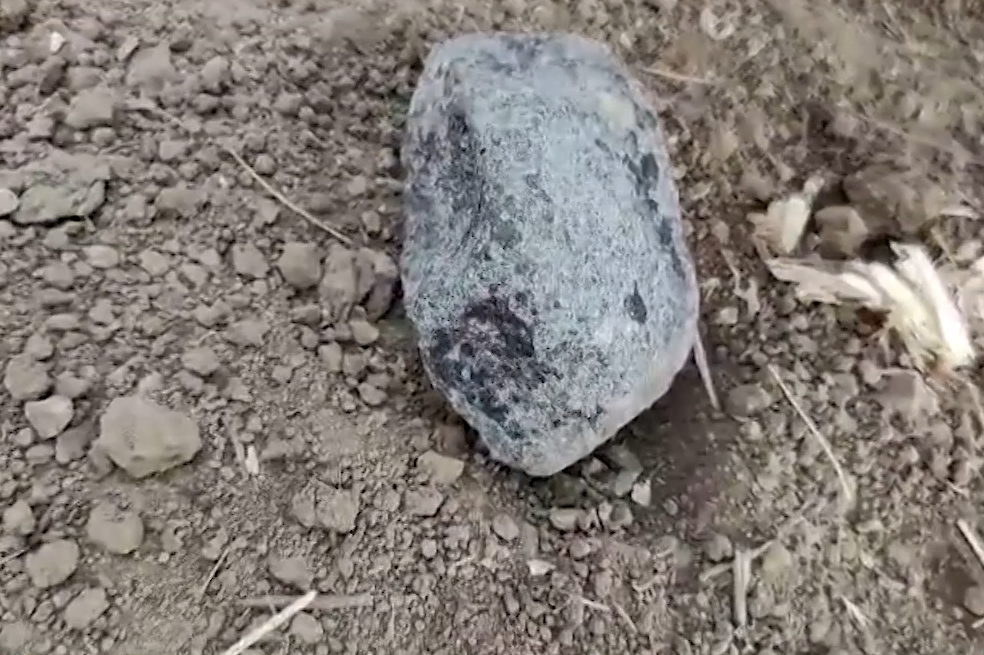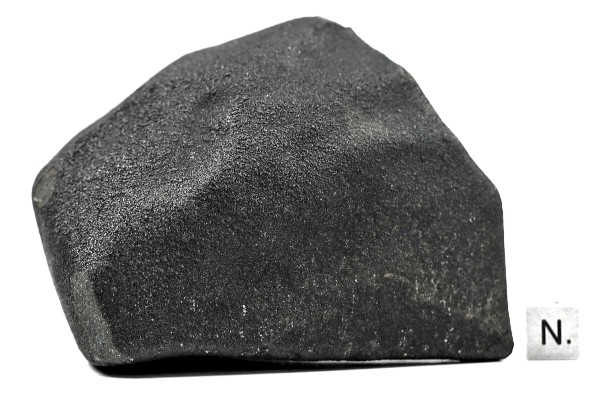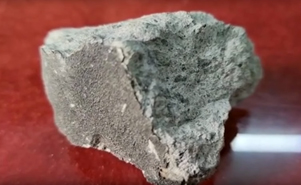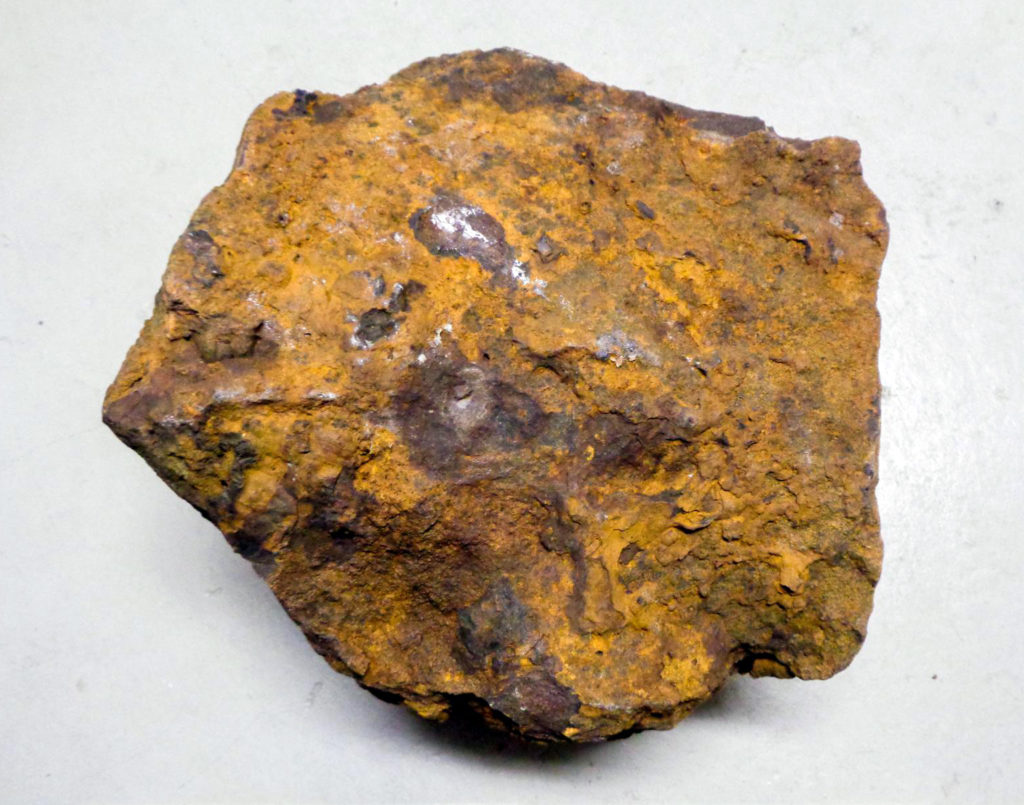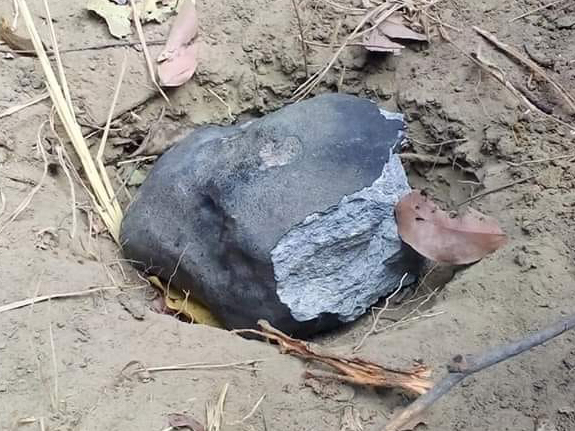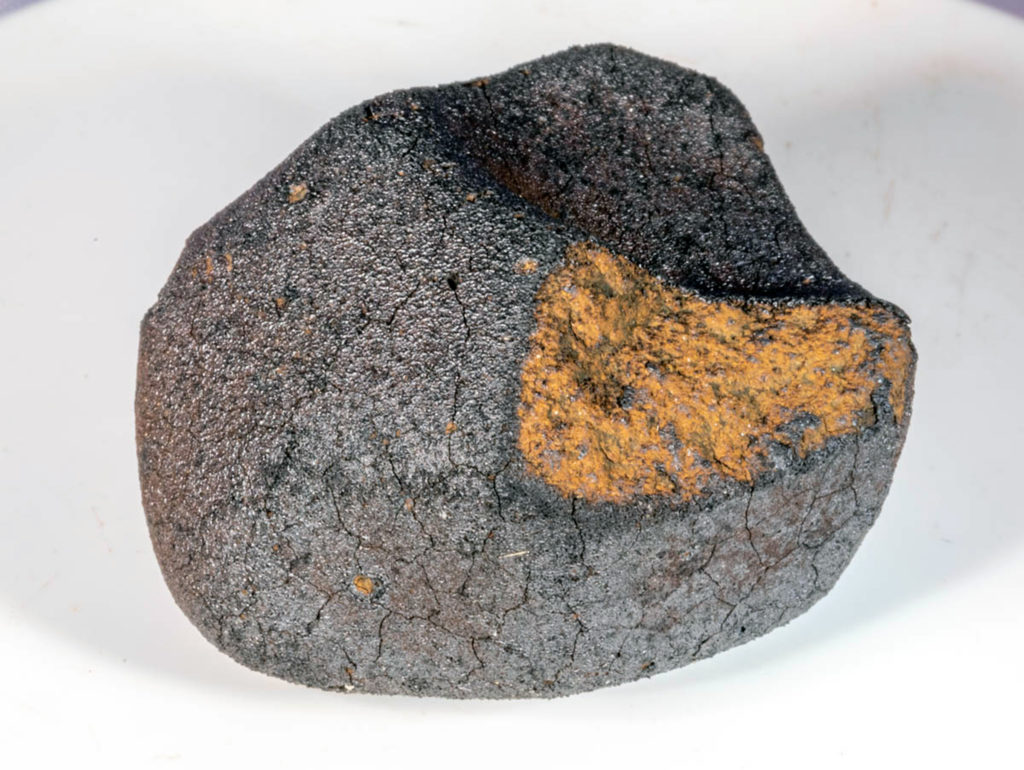Physicochemical Controls on the Compositions of the Earth and PlanetsOPEN ACCESS
Paolo A. Sossi, Remco C. Hin, Thorsten Kleine, Alessandro Morbidelli & Francis Nimmo Space Science Reviews, Volume 221, article number 118, Published: 25 November 2025 LINK (OPEN ACCESS)PDF (OPEN ACCESS) “Despite the fact that the…
Initial Conditions of Planet Formation: Time Constraints from Small Bodies and the Lifetime of Reservoirs in the Solar Protoplanetary DiskOPEN ACCESS
Maria Schönbächler, Audrey Bouvier, Noriko T. Kita & Thomas S. Kruijer Space Science Reviews, Volume 221, article number 97, Published: 17 October 2025 LINK (OPEN ACCESS)PDF (OPEN ACCESS) “This review explores the timescales of the…
Planet formation in chemically diverse and evolving discs — I. Composition of planetary building blocksOPEN ACCESS
E. Pacetti, E. Schisano, D. Turrini, C. P. Dullemond, S. Molinari, C. Walsh, S. Fonte, U. Lebreuilly, R. S. Klessen, P. Hennebelle, S. L. Ivanovski, R. Politi, D. Polychroni, P. Simonetti, L. Testi Accepted for…
Germanium isotope fractionation during evaporation from metal and sulfide melts: Implications for volatile element loss from planetary materialsOPEN ACCESS
Elias Wölfer, Christian J. Renggli, Christoph Burkhardt, Thorsten Kleine Geochimica et Cosmochimica ActaAvailable online 30 May 2025 LINK + PDF (OPEN ACCESS) “The Ge elemental and isotopic composition of planetary materials holds essential clues on…
The cosmochemistry of planetary systems
Martin Bizzarro, Anders Johansen & Caroline Dorn Nature Reviews Chemistry, Review Article, Published: 28 April 2025 LINK “Planets form and obtain their compositions from the leftover material present in protoplanetary disks of dust and gas…
Protoplanetary cores drove chondrule formationOPEN ACCESS
Mohamad Ali-Dib, Craig Walton resubmitted to MNRAS in February 2025 after revision (preprint 21 Mars 2025) PDF (OPEN ACCESS) “Chondrules are small spherical objects that formed at high temperatures early in the history of the…
Understanding the Effects of Micrometeoroid Bombardment on Graphite-rich Mercury Analogs through Laboratory Experiments and Electron Microscopy AnalysisOPEN ACCESS
Nicolas Bott, Michelle S. Thompson, Mark J. Loeffler, Kathleen E. Vander Kaaden and Francis M. McCubbin The Planetary Science Journal, Volume 5, Number 11, Published: 18 November 2024 LINK (OPEN ACCESS)PDF (OPEN ACCESS) “Space weathering…
Reactivity of chondritic meteorites under H2-rich atmospheres: Formation of H2SOPEN ACCESS
V. Cabedo, G. Pareras, J. Allitt, A. Rimola, J. Llorca, H. H. P. Yiu, M. R. S. McCoustra Approved for publication in MNRAS PDF (OPEN ACCESS) “Current models of chemical evolution during star and planetary…
The link between Athor and EL meteorites does not constrain the timing of the giant planet instabilityOPEN ACCESS
Andre Izidoro, Rogerio Deienno, Sean N. Raymond, Matthew S. Clement Comments welcome PDF (OPEN ACCESS) “The asteroid Athor, residing today in the inner main asteroid belt, has been recently associated as the source of EL…
Implantation of asteroids from the terrestrial planet region: The effect of the timing of the giant planet instabilityOPEN ACCESS
Andre Izidoro, Rogerio Deienno, Sean N. Raymond, Matthew S. Clement Under review in Icarus PDF (OPEN ACCESS) “The dynamical architecture and compositional diversity of the asteroid belt strongly constrain planet formation models. Recent Solar System…
Geophysical evidence for an enriched molten silicate layer above Mars’s coreOPEN ACCESS
Henri Samuel, Mélanie Drilleau, Attilio Rivoldini, Zongbo Xu, Quancheng Huang, Raphaël F. Garcia, Vedran Lekić, Jessica C. E. Irving, James Badro, Philippe H. Lognonné, James A. D. Connolly, Taichi Kawamura, Tamara Gudkova & William B….
Evidence for a liquid silicate layer atop the Martian coreOPEN ACCESS
A. Khan, D. Huang, C. Durán, P. A. Sossi, D. Giardini & M. Murakami Nature, Volume 622, pages 718–723 (2023) LINK (OPEN ACCESS)PDF (OPEN ACCESS) “Seismic recordings made during the InSight mission1 suggested that Mars’s…
Composition and Sticking of Hot Chondritic Dust in a Protoplanetary Hydrogen AtmosphereOPEN ACCESS
Cynthia Pillich, Tabea Bogdan, Janosch Tasto, Joachim Landers, Gerhard Wurm and Heiko Wende The Planetary Science Journal, Volume 4, Number 10 LINK (OPEN ACCESS)PDF (OPEN ACCESS) “The sticking properties of dust in early phases of…
Outgassing Composition of the Murchison Meteorite: Implications for Volatile Depletion of Planetesimals and Interior-atmosphere Connections for Terrestrial ExoplanetsOPEN ACCESS
Maggie A. Thompson, Myriam Telus, Graham Harper Edwards, Laura Schaefer, Jasmeet Dhaliwal, Brian Dreyer, Jonathan J. Fortney and Kyle Kim The Planetary Science Journal, Volume 4, Number 10 LINK (OPEN ACCESS)PDF (OPEN ACCESS) “Outgassing is…
Reconciling fast and slow cooling during planetary formation as recorded in the main group pallasitesOPEN ACCESS
M. Murphy Quinlan, A.M. Walker, C.J. Davies Earth and Planetary Science LettersVolume 618, 15 September 2023, 118284 LINK (OPEN ACCESS)PDF (OPEN ACCESS) “Highlights Fast and slow cooling recorded in pallasites can be explained by metal…
Peculiarities of the Extraterrestrial Basalts of the Solar System with Reference to the Exoplanet Science: a Brief Review
S. I. Demidova & D. D. Badyukov Geochemistry International, Volume 61, pages 453–467Published: 06 July 2023 LINK “The formation of basalts is a global stage in the evolution of differentiated cosmic body (planet or asteroid)…
Terrestrial planet and asteroid belt formation by Jupiter–Saturn chaotic excitationOPEN ACCESS
Patryk Sofia Lykawka & Takashi Ito Scientific Reports, Volume 13, Article number: 4708 LINK (OPEN ACCESS)PDF (OPEN ACCESS) “The terrestrial planets formed by accretion of asteroid-like objects within the inner solar system’s protoplanetary disk. Previous…
New chondritic bodies identified in eight oxygen-bearing white dwarfsOPEN ACCESS
Alexandra E. Doyle, Beth L. Klein, Patrick Dufour, Carl Melis, B. Zuckerman, Siyi Xu, Alycia J. Weinberger, Isabella L. Trierweiler, Nathaniel N. Monson, Michael A. Jura, Edward D. Young Accepted for publication in ApJ PDF…
Origin of the superchondritic carbon/nitrogen ratio of the bulk silicate Earth − an outlook from iron meteorites
Damanveer S. Grewal, Paul D. Asimow Geochimica et Cosmochimica ActaAvailable online 20 January 2023 LINK “Disagreement regarding the origin of the bulk silicate Earth’s (BSE) superchondritic carbon/nitrogen (C/N) ratio is due, in part, to the…
Limited nitrogen isotopic fractionation during core-mantle differentiation in rocky protoplanets and planets
Damanveer S. Grewal, Tao Sun, Sanath Aithala, Taylor Hough, Rajdeep Dasgupta, Laurence Y. Yeung, Edwin Schauble Geochimica et Cosmochimica ActaAvailable online 19 October 2022 LINK “15N/14N ratios of meteorites are a powerful tool for tracing…
Experiments on the reactivity of basaltic minerals and glasses in Venus surface conditions using the Glenn Extreme Environment RigOPEN ACCESS
Brandon G. Radoman-Shaw, Ralph P. Harvey, Gustavo Costa, Nathan S. Jacobson, Amir Avishai, Leah M. Nakley, Daniel Vento MAPSFirst published: 14 September 2022 LINK (OPEN ACCESS)PDF (OPEN ACCESS) “Climate models for Venus rely heavily on…
Did transit through the galactic spiral arms seed crust production on the early Earth?OPEN ACCESS
C.L. Kirkland, P.J. Sutton, T. Erickson, T.E. Johnson, M.I.H. Hartnady, H. Smithies, M. Prause GeologyAugust 23, 2022 LINK (OPEN ACCESS) Supplemental Material “Although there is evidence for periodic geological perturbations driven by regular or semi-regular…
Widespread impact-generated porosity in early planetary crustsOPEN ACCESS
Sean E. Wiggins, Brandon C. Johnson, Gareth S. Collins, H. Jay Melosh & Simone Marchi Nature Communications, Volume 13, Article number: 4817Published: 16 August 2022 LINK (OPEN ACCESS)PDF (OPEN ACCESS) “NASA’s Gravity Recovery and Interior…
Towards In-Situ Geochemical Analysis of Planetary Rocks and Soils by Laser Ablation/Ionisation Time-of-Flight Mass SpectrometryOPEN ACCESS
Marek Tulej, Peter Keresztes Schmidt, Salome Gruchola, Coenraad P. de Koning, Kristina A. Kipfer, Nikita J. Boeren, Niels F. W. Ligterink, Andreas Riedo and Peter Wurz Universe, 2022, 8(8), 410ReviewPublished: 4 August 2022 LINK (OPEN…
Anatomy of rocky planets formed by rapid pebble accretion III. Partitioning of volatiles between planetary core, mantle, and atmosphereOPEN ACCESS
Anders Johansen, Thomas Ronnet, Martin Schiller, Zhengbin Deng, Martin Bizzarro Version accepted for Astronomy & Astrophysics PDF (OPEN ACCESS) “Volatile molecules containing hydrogen, carbon, and nitrogen are key components of planetary atmospheres. In the pebble…
Anatomy of rocky planets formed by rapid pebble accretion II. Differentiation by accretion energy and thermal blanketingOPEN ACCESS
Anders Johansen, Thomas Ronnet, Martin Schiller, Zhengbin Deng, Martin Bizzarro Version accepted for Astronomy & Astrophysics PDF (OPEN ACCESS) “We explore the heating and differentiation of rocky planets that grow by rapid pebble accretion. Our…
Anatomy of rocky planets formed by rapid pebble accretion I. How icy pebbles determine the core fraction and FeO contentsOPEN ACCESS
Anders Johansen, Thomas Ronnet, Martin Schiller, Zhengbin Deng, Martin Bizzarro Version accepted for Astronomy & Astrophysics PDF (OPEN ACCESS) “We present a series of papers dedicated to modelling the accretion and differentiation of rocky planets…
Early Solar System instability triggered by dispersal of the gaseous disk
Beibei Liu, Sean N. Raymond & Seth A. Jacobson Nature, Volume 604, pages 643–646Published: 27 April 2022 LINK “The Solar System’s orbital structure is thought to have been sculpted by an episode of dynamical instability…
Did Earth eat its leftovers? Impact ejecta as a component of the late veneerOPEN ACCESS
Philip J. Carter, Sarah T. Stewart Draft version April 11, 2022, to be published in PSJ PDF (OPEN ACCESS) Update (19 April 2022):LINK (OPEN ACCESS)PDF (OPEN ACCESS)The Planetary Science Journal, Volume 3, Number 4 “The…
Evidence for a primordial isotopic gradient in the inner region of the solar protoplanetary discOPEN ACCESS
J. Mah, R. Brasser, J. M. Y. Woo, A. Bouvier, S. J. Mojzsis manuscript, accepted for publication in Astronomy & Astrophysics PDF (OPEN ACCESS) and PDF (OPEN ACCESS) “Not only do the sampled terrestrial worlds…
Chemical Differentiation of Planets: A Core IssueOPEN ACCESS
Hervé Toulhoat, Viacheslav Zgonnik The Astrophysical Journal, Volume 924, Number 2Published: 14 January 2022 LINK (OPEN ACCESS)PDF (OPEN ACCESS) “By plotting empirical chemical element abundances on Earth relative to the Sun and normalized to silicon…
Moons are planets: Scientific usefulness versus cultural teleology in the taxonomy of planetary scienceOPEN ACCESS
Philip T. Metzger, W.M. Grundy, Mark V. Sykes, Alan Stern, James F. Bell III, Charlene E. Detelich, Kirby Runyon, Michael Summers IcarusAvailable online 28 October 2021 LINKPDF (OPEN ACCESS) “Highlights • Vital issues were not…
The Dark Side of PlutoOPEN ACCESS
Tod R. Lauer, John R. Spencer, Tanguy Bertrand, Ross A. Beyer, Kirby D, Runyon, Oliver L White, Leslie A. Young, Kimberly Ennico, William B. McKinnon, Jeffrey M. Moore, Catherine B. Olkin, S. Alan Stern and…
Specific Heat Capacity Measurements of Selected Meteorites for Planetary Surface Temperature Modeling
Sylvain Piqueux, Tuan H. Vu, Jonathan Bapst, Laurence A.J. Garvie, Mathieu Choukroun, Christopher S. Edwards JGR PlanetsFirst published: 16 October 2021, accepted for publication and undergone full peer review LINK “Key Points Specific heat capacity…
A Model to Predict the Size of Regolith Clumps on Planetary BodiesOPEN ACCESS
Anand Patel and Christine Hartzell The Planetary Science Journal, Volume 2, Number 5 LINK (OPEN ACCESS)PDF (OPEN ACCESS) “Prior investigations of the behavior of regolith on the surface of planetary bodies has considered the motion…
Spectral endmember variability on hyperspectral datasets of a Martian meteorite – Implications for planetary surfacesOPEN ACCESS
Lu Pan, Cathy Quantin-Nataf, Lucia Mandon, Melissa Martinot, Pierre Beck IcarusIn Press, Journal Pre-proof, Available online 18 August 2021 LINK (OPEN ACCESS) “Highlights • Spectral images of a Martian meteorite are analyzed to test spectral…
Hydrodynamic instability at impact interfaces and planetary implicationsOPEN ACCESS
Avi Ravid, Robert I. Citron & Raymond Jeanloz Nature Communications, Volume 12 LINK (OPEN ACCESS)PDF (OPEN ACCESS) “Impact-induced mixing between bolide and target is fundamental to the geochemical evolution of a growing planet, yet aside…
Host-star and exoplanet compositions: a pilot study using a wide binary with a polluted white dwarfOPEN ACCESS
Amy Bonsor, Paula Jofré, Oliver Shorttle, Laura K. Rogers, Siyi Xu, Carl Melis Monthly Notices of the Royal Astronomical SocietyPublished: 10 February 2021 LINK PDF (OPEN ACCESS) “Planets and stars ultimately form out of the…
A very early origin of isotopically distinct nitrogen in inner Solar System protoplanetsOPEN ACCESS
Damanveer S. Grewal, Rajdeep Dasgupta & Bernard Marty Nature Astronomy (2021) LINK Preprint (differs from the journal version) PDF (OPEN ACCESS)Journal PDF (OPEN ACCESS) “Understanding the origin of life-essential volatiles such as nitrogen (N) in…
History of the solar nebula from meteorite paleomagnetismOPEN ACCESS
Benjamin P. Weiss, Xue-Ning Bai and Roger R. Fu Science Advances 01 Jan 2021:Vol. 7, no. 1, eaba5967DOI: 10.1126/sciadv.aba5967 LINK (OPEN ACCESS)PDF (OPEN ACCESS) Supplementary Materials “We review recent advances in our understanding of magnetism…
Formation of Venus, Earth and Mars: Constrained by Isotopes
Helmut Lammer, Ramon Brasser, Anders Johansen, Manuel Scherf & Martin Leitzinger Space Science ReviewsPublished: 22 December 2020 LINKUpdate (12 February 2021); PDF (OPEN ACCESS) “Here we discuss the current state of knowledge of terrestrial planet…
Rocklines as Cradles for Refractory Solids in the Protosolar Nebula
Artyom Aguichine, Olivier Mousis, Bertrand Devouard, Thomas Ronnet The Astrophysical Journal, Volume 901, Number 2Published 2020 September 25 LINK “In our solar system, terrestrial planets and meteoritical matter exhibit various bulk compositions. To understand this…
What is the Oxygen Isotope Composition of Venus? The Scientific Case for Sample Return from Earth’s “Sister” PlanetOPEN ACCESS
Richard C. Greenwood & Mahesh Anand Space Science Reviews, Volume 216, Article number: 52 (2020) LINK (OPEN ACCESS)PDF (OPEN ACCESS) “Venus is Earth’s closest planetary neighbour and both bodies are of similar size and mass….
The partitioning of the inner and outer Solar System by a structured protoplanetary disk
R. Brasser & S. J. Mojzsis Nature Astronomy (2020) Published: 13 January 2020 LINK “Mass-independent isotopic anomalies define two cosmochemically distinct regions: the carbonaceous and non-carbonaceous meteorites, implying that the non-carbonaceous (terrestrial) and carbonaceous (Jovian)…
Water vapour in the atmosphere of the habitable-zone eight-Earth-mass planet K2-18 bOPEN ACCESS
Angelos Tsiaras, Ingo P. Waldmann, Giovanna Tinetti, Jonathan Tennyson & Sergey N. Yurchenko Nature Astronomy (2019) PDF (OPEN ACCESS) LINK “In the past decade, observations from space and the ground have found water to be…
Cosmic dust fluxes in the atmospheres of Earth, Mars, and VenusOPEN ACCESS
Juan Diego Carrillo-Sánchez, Juan Carlos Gómez-Martín, David L. Bones, David Nesvorný, Petr Pokorný, Mehdi Benna, George J. Flynn, John M.C. Plane Icarus Available online 2 August 2019 LINK (OPEN ACCESS) PDF (OPEN ACCESS) “The ablation…
Reflectance spectra of synthetic Fe-free ortho- and clinoenstatites in the UV/VIS/IR and implications for remote sensing detection of Fe-free pyroxenes on planetary surfaces
Kathrin Markus, Lyuba Moroz, Gabriele Arnold, Daniela Henckel, Harald Hiesinger, Arno Rohrbach, Klemme Stephan Planetary and Space Science Available online 11 April 2018 LINK “Highlights • Even extremely Fe-poor pyroxenes show deep ultraviolet absorption bands….
Silver contents and Cu/Ag ratios in Martian meteorites and the implications for planetary differentiation
Zaicong Wang, Harry Becker Geochimica et Cosmochimica Acta In Press, Accepted Manuscript, Available online 21 May 2017 LINK “Silver and Cu show very similar partitioning behavior in sulfide melt-silicate melt and metal-silicate systems at low…
Evidence that 26Al did Not Melt Asteroids
Wasson J. T. * 79th Annual Meeting of the Meteoritical Society (2016) #6530 LINK
Compositional evolution during rocky protoplanet accretion
Philip J. Carter, Zoë M. Leinhardt, Tim Elliott, Michael J. Walter, Sarah T. Stewart Accepted for publication in ApJ. PDF (full text) abstract Animations to accompany selected figures in the paper “The Earth appears non-chondritic…
High-temperature miscibility of iron and rock during terrestrial planet formation
Sean M. Wahl, Burkhard Militzer Earth and Planetary Science Letters Volume 410, 15 January 2015, Pages 25–33 LINK
Ground-based IR observation of oxygen isotope ratios in the Venus atmosphere
N. Iwagami, G.L. Hashimoto, S. Ohtsuki, S. Takagi, S. Robert Planetary and Space Science available online 12 November 2014 LINK Correlation plot of δ17O and δ18O in Earth-Moon, Mars and Venus
Carbon-rich Planet Formation in a Solar Composition Disk
Ali-Dib M, Mousis O, Jean-Marc Petit J-M and Lunine JI (2014) The Astrophysical Journal 785:125. ApJ 785 125. doi:10.1088/0004-637X/785/2/125 LINK
Alpha-decay of 184Os revealed by radiogenic 180W in meteorites: Half life determination and viability as geochronometer
Peters STM, Münker C, Becker H and Schulz T (2014) Earth and Planetary Science Letters Volume 391, 1 April 2014, Pages 69–76 LINK
Terrestrial planet formation
K. Righter and D. P. O’Brien PNAS 2011 108 (48) 19165-19170; published ahead of print June 27, 2011, doi:10.1073/pnas.1013480108 PDF LINK LINK (Supporting Information)

